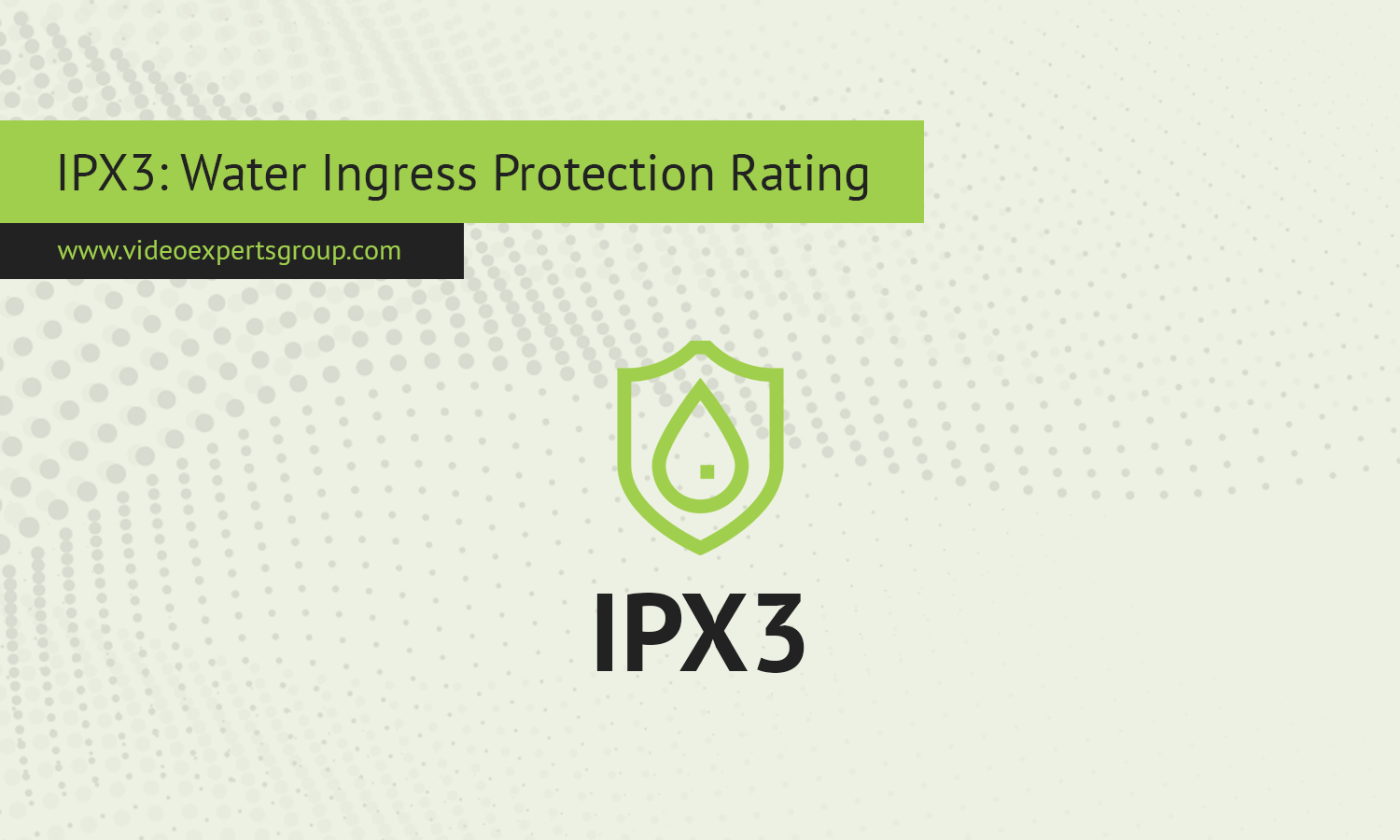The IPX rating system is a standard used to evaluate the level of water resistance that a device can provide. One of the intermediate levels of protection in this system is IPX3, which is designed to protect devices against water sprays. This article explores the meaning of IPX3, its position within the IPX rating chart, and the testing procedures and requirements necessary to achieve this rating.
Meaning
IPX3 is an ingress protection rating that indicates a device’s ability to resist water sprays up to 60 degrees from the vertical. The "X" in IPX3 denotes that the rating does not address protection against solid particles like dust, focusing solely on water resistance. The "3" indicates that the device is protected against water sprayed at an angle, making it more robust than devices rated at IPX1 or IPX2. This level of protection is particularly useful for devices that may be exposed to light rain or water sprays from various directions.
IPX Rating Chart
| IPX Rating | Protection Level | Description |
| IPX0 | No protection | No protection against water ingress |
| IPX1 | Drip-proof | Protection against vertical water drops |
| IPX2 | Drip-proof (15-degree tilt) | Protection against water drops when tilted up to 15 degrees |
| IPX3 | Spray-proof | Protection against water spray up to 60 degrees from vertical |
| IPX4 | Splash-proof | Protection against water splashes from any direction |
| IPX5 | Water-jet resistant | Protection against water jets from a 6.3mm nozzle from any direction |
| IPX6 | Powerful water-jet resistant | Protection against more powerful water jets |
| IPX7 | Immersion up to 1 meter | Protection against temporary immersion in water up to 1 meter for 30 minutes |
| IPX8 | Immersion beyond 1 meter | Protection against continuous immersion in water beyond 1 meter, under conditions set by the manufacturer |
| IPX9 | High-pressure, high-temperature water resistant | Protection against high-pressure, high-temperature water jets |
What is the IPX3 Test Procedure?
The IPX3 test procedure is designed to assess a device's ability to withstand water sprayed at an angle. This test simulates conditions like light rain or water spraying onto the device from various directions. The procedure includes the following steps:
-
Test Setup: The device is placed on a turntable that rotates at a speed of 1 RPM. The turntable can be adjusted to ensure that the device is exposed to water from all directions.
-
Water Spray: Water is sprayed onto the device using oscillating spray nozzles that cover an arc of 60 degrees from the vertical. The spray rate is set to 10 liters per minute, and the device is exposed to this spray for a duration of 10 minutes.
-
Device Orientation: The device is tested in its normal operating position. If the device has multiple intended orientations, it is tested in each of these positions to ensure consistent water resistance across different angles.
-
Assessment: After the test, the device is inspected for water ingress. To pass the IPX3 test, the device must not show any signs of water entry that could affect its operation or safety.
Requirements
For a device to be certified as IPX3, it must meet specific requirements during the testing process:
- Spray Resistance: The device must demonstrate the ability to resist water sprayed at an angle of up to 60 degrees from the vertical.
- No Water Ingress: The device must show no significant water ingress that could interfere with its functionality or compromise safety.
- Uniform Protection: The device is tested in multiple orientations to ensure that it provides consistent protection from water sprays in all intended operating positions.
Devices with an IPX3 rating are suitable for environments where they might be exposed to light rain or water sprays from various angles. While IPX3 offers moderate protection, it is not intended for situations where the device may be subjected to heavy rain, immersion, or high-pressure water jets. For more comprehensive water resistance, higher IPX ratings, such as IPX5 or above, should be considered.
















